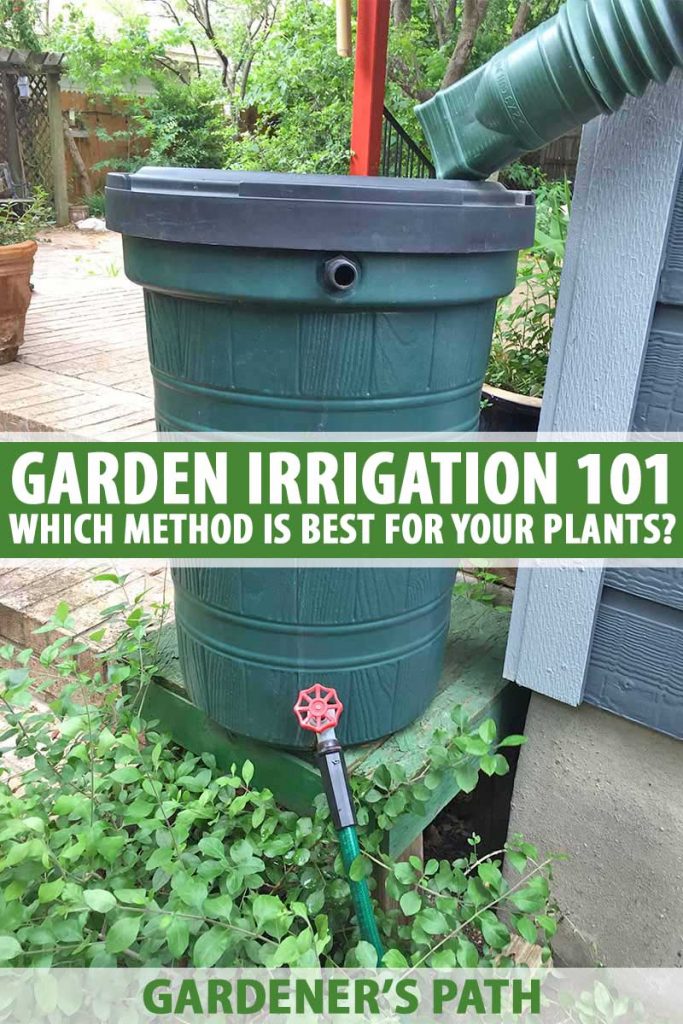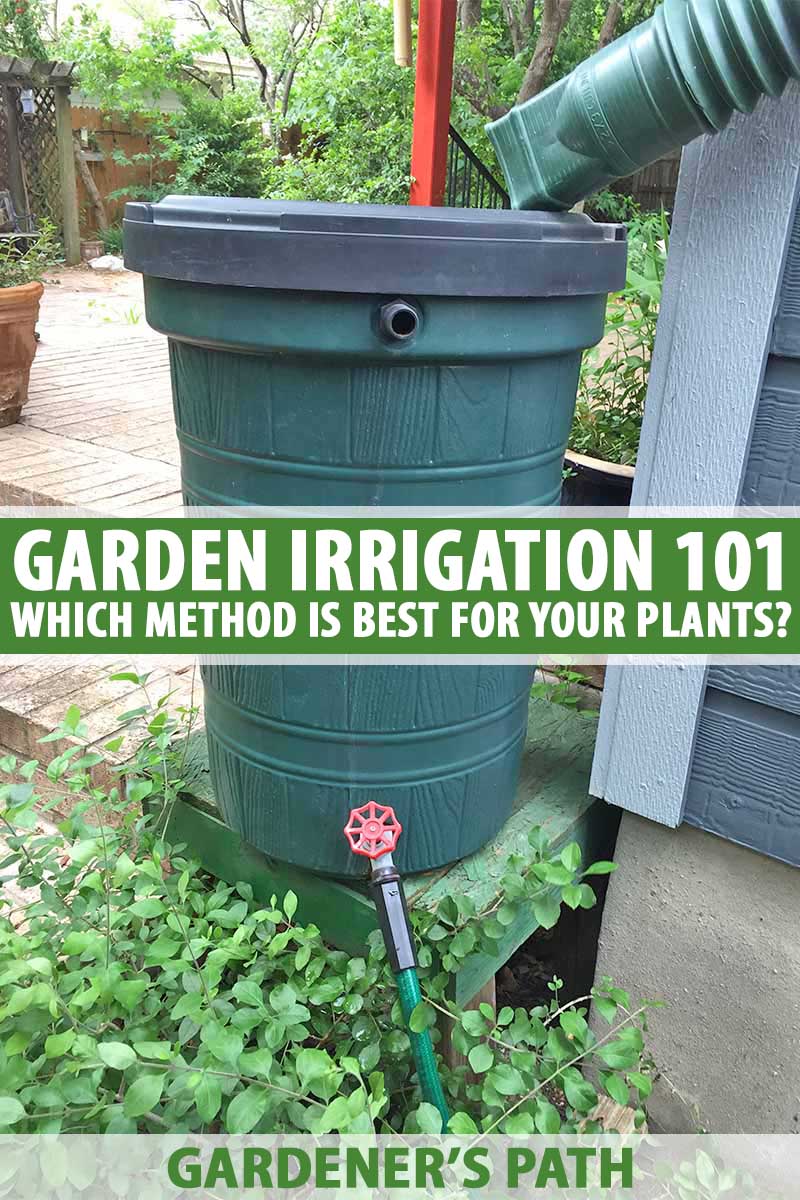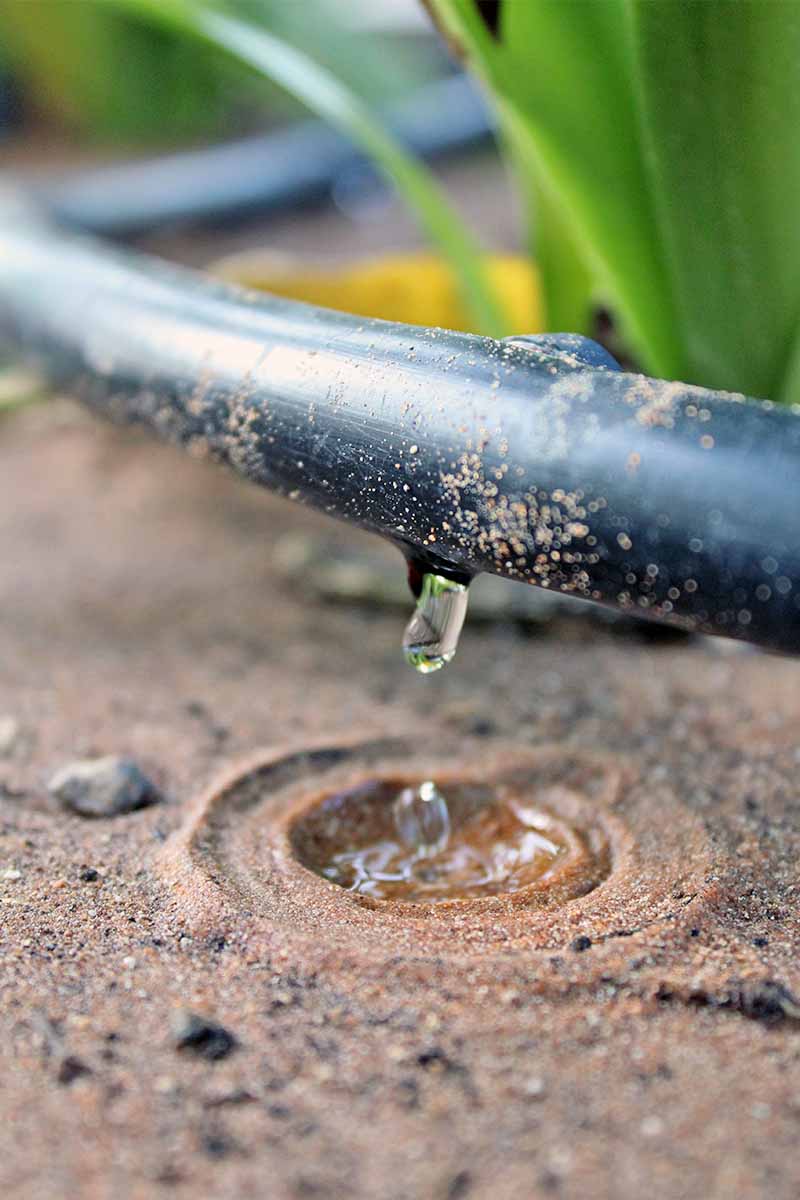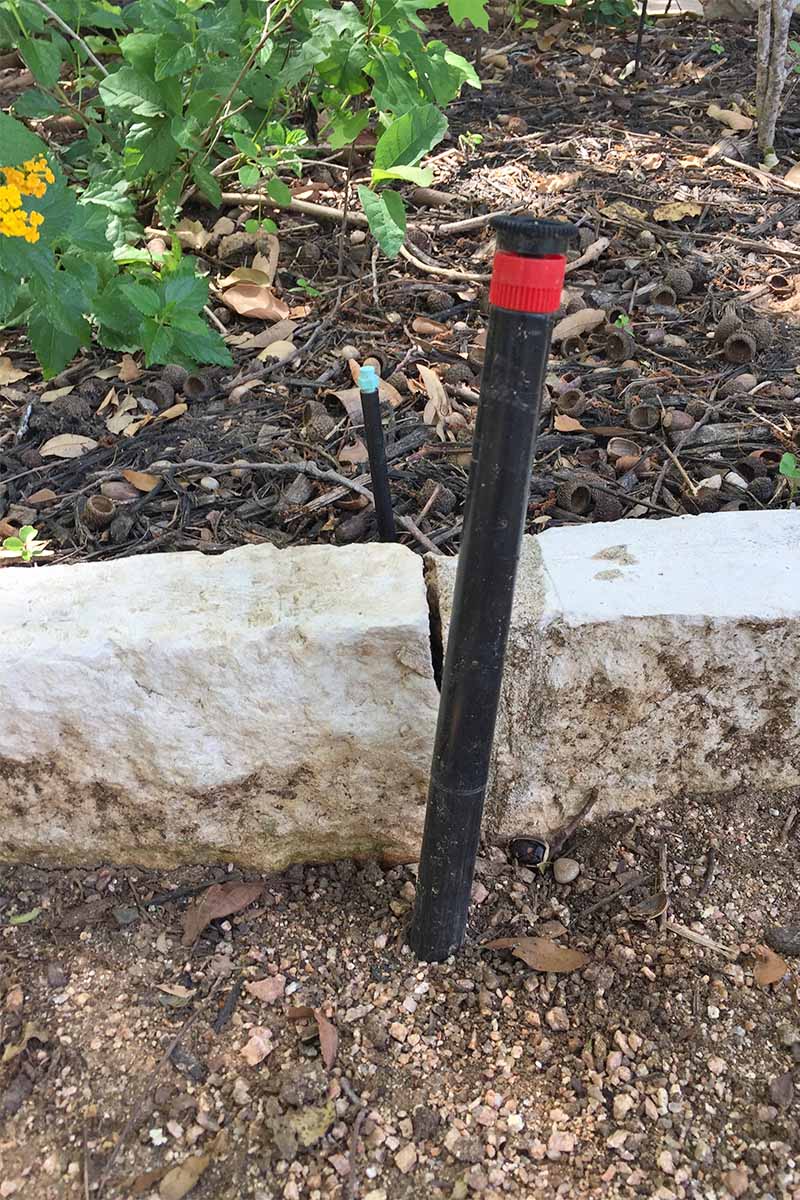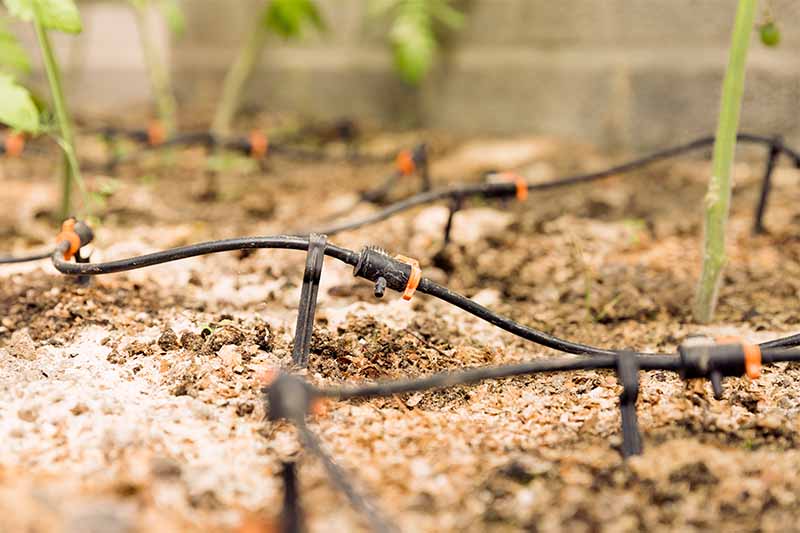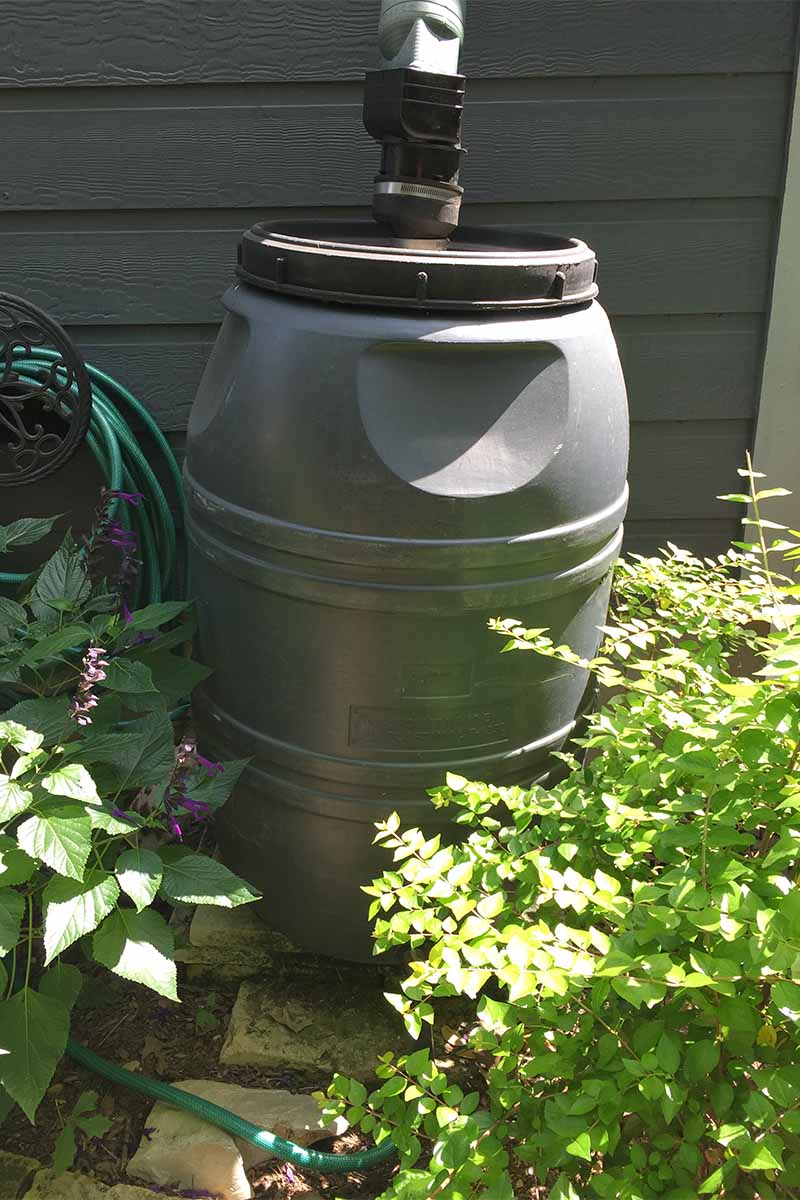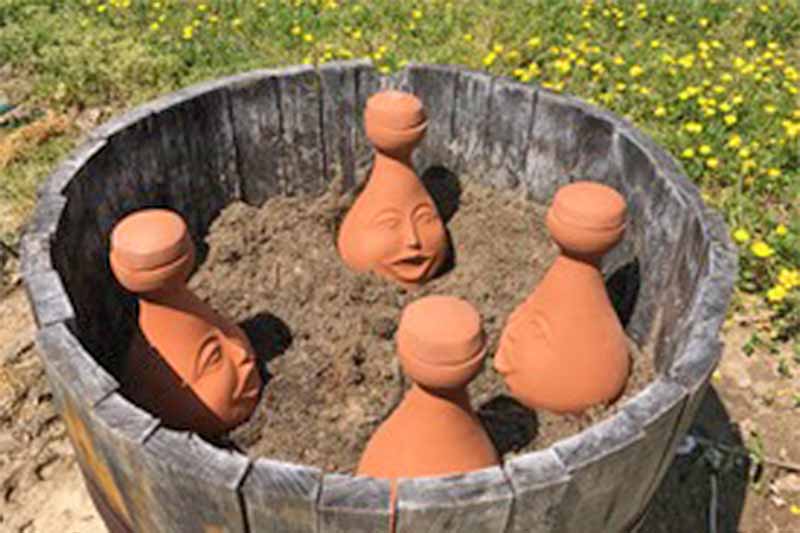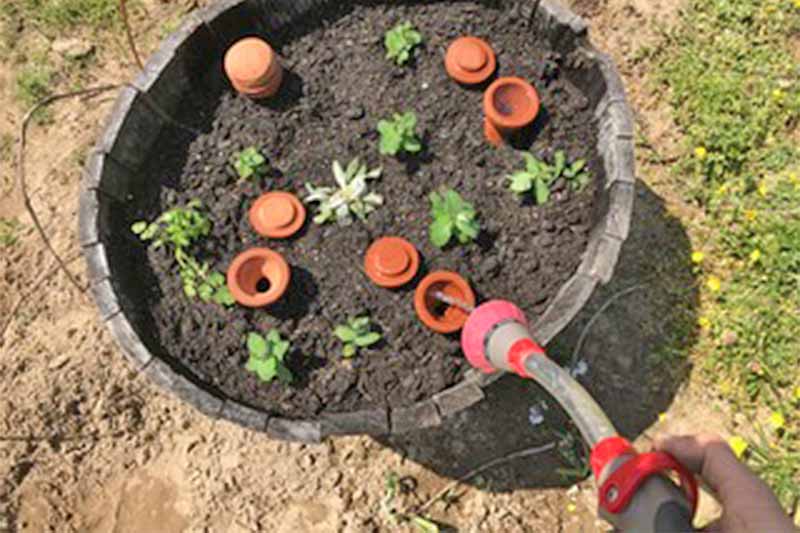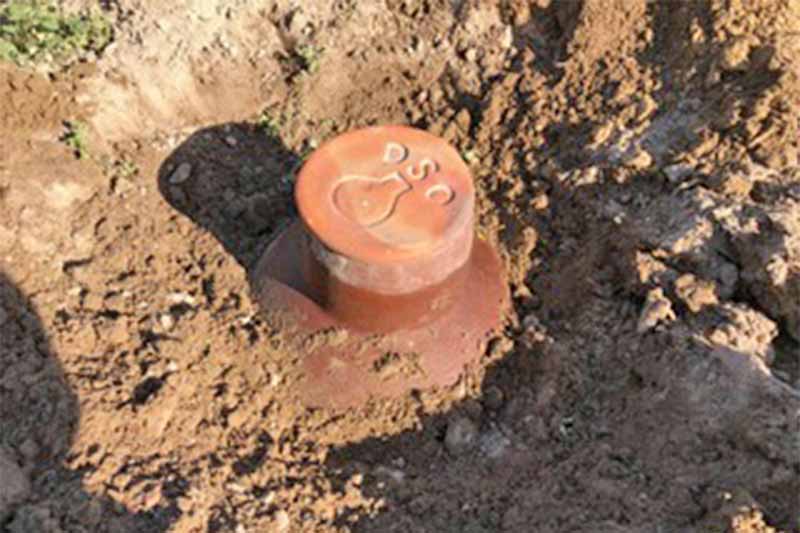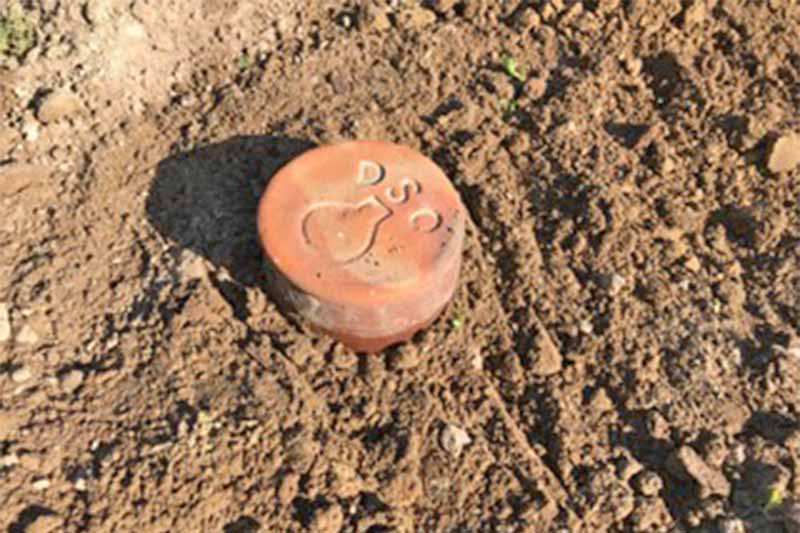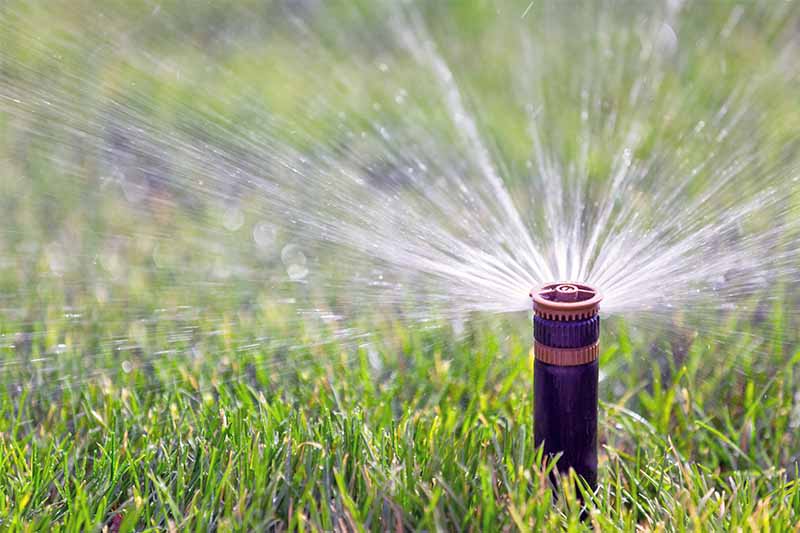While I do sometimes enjoy standing in the garden with a hose and communing with the flora and fauna, other times I’m glad if something more automatic takes over the job – like when it’s 98 degrees outside. We link to vendors to help you find relevant products. If you buy from one of our links, we may earn a commission. Let’s look at some options.
Sprinklers
Sprinkler watering is perhaps the most common type of irrigation. And there are a few different types available, in above-ground or in-ground styles. A downside to sprinkler systems of either type is the loss of sprayed water to the atmosphere, and on the driveway and other hardscape areas. A benefit, however, is that sprinkled water will soak any containers in its path.
Above-Ground
This is the kind you place on the end of a hose and haul out to the yard or garden, moving from area to area to get everything watered.
These hose-end sprinklers can have various types of water-distribution functionality, such as oscillating, sweeping, pulsating, and arm whirling. Some sprinklers allow you to change the distance, the radius, and the pattern of the spray. As an added bonus, this is the type the kids love running through in the summertime.
You can fit a timer into these types of systems, or there are some fairly sophisticated time/zone setups available for installation as well. This is a relatively affordable watering system.
In-Ground
Then there’s the in-ground sprinkler system, where watering heads are connected to an underground pipe system. This hooks into your main water supply and is managed by a central electronic “brain.” This type of system is highly automated – you can set up watering zones and schedule each to get a particular amount of water at a particular time. Many in-ground sprinkler systems can also sense rain and shut themselves off, so as not to add additional water to the landscape when it is not needed. A number of types of sprinkler heads are available for these sprinkler systems, allowing you to customize the water distribution depending on the type of plants that are growing near each head. Some emit a constant spray in any of a variety of radiuses, covering 360 degrees, for example, or just 180 degrees, if it’s placed near a sidewalk and you don’t want the spray the hardscape. This can be helpful particularly in areas that ban wastewater runoff in times of drought. Options are available to produce single or multiple streams of water that slowly rotate in a circle or a specific radius. Still others – “bubblers” or “flood” types – just gurgle water, to soak a smaller area. Some sprinkler heads are subterranean when not in use, popping up to distribute the water; others permanently rise above the foliage. In-ground sprinkler systems are quite pricey to install overall, and can be a bit of a headache to maintain.
Soaker Hoses
This is generally a very affordable type of watering system. Typically made of recycled tires, soaker hoses are riddled with tiny holes from which water seeps. You just hook them up to your spigot or to a leader hose that’s hooked up to the faucet, and turn on the water. Water drips along the entire length of the hose, meaning as it winds around your garden, it inevitably waters some areas where you don’t have plants. This inadvertent watering is a potential downside. You can get fancy with elbow or T-connectors to split off multiple lines, if you like, or just keep it simple. Installation of landscape staples might be required to keep the hoses in position.
Drip Irrigation
Similar to a soaker hose, drip emitters consist of an intact hose or tube from which drip emitters (tubes with holes) extend. This allows for more precise placement of the watering lengths. A drip irrigation system is more expensive than a soaker hose, but cheaper than an in-ground sprinkler system.
Incidentally, a major advantage of bubblers, soaker hoses, and drip irrigation is that you’re putting the water at the base of plants, at ground level. You’re not spewing water into the wind, and you’re not watering leaves, which can lead to diseases that thrive in a damp environment.
Rain Barrels: Save Money with Recycled Water
Though this is not an irrigation system per se, we’d be remiss if we didn’t mention rain barrels. These collect rainwater from your gutter downspouts and may be connected to a drip irrigation system, soaker hose, or regular hose for distribution into the landscape. At my house, we have separate hoses attached to our rain barrels and just hand-water with those hoses. We don’t get enough rain to rely on our barrels’ collection as our sole irrigation water source. Rain barrels come in a variety of sizes from around 35 gallons on up, and are priced accordingly. Keep in mind that local ordinances may ban water collection of this kind in some areas.
Buried Reservoirs
Less common in modern gardening but gaining some popularity online in recent years, buried reservoirs are nevertheless a tried and true irrigation method used by many gardeners. The theory here is that you bury vessels – usually clay – sporadically throughout your garden. These clay pots are filled with water, and then the magic happens.
Ollas
A clay vessel used for this purpose is called an olla (pronounced “OH-ya”). They’re thought to have originated in northern Africa, and were brought to the Americas by conquistadors. Research also indicates that ollas were used in China more than 4000 years ago. Clay pot irrigation relies on the scientific principle of soil tension, referring to the tension between something dry and something wet. This means if the soil surrounding a buried olla is dry, it will wick moisture out of the vessel. “On the other hand, if it has rained recently and the ground is wet, no water will be extracted from the olla,” says Mary Kathryn Dunston, owner of Dripping Springs Ollas, a wholesale manufacturer of ollas that sells to retail outlets all over the United States. In this way, ollas are a water-conscious and plant-conscious irrigation method. Well-made clay ollas are crafted out of unglazed, porous clay with a technique that renders the vessels especially porous, says Dunston. Depending on the size, ollas can generally water areas as wide as 3-4 feet in diameter, according to Dunston. Ollas can be used anywhere – in vegetable gardens, in perennial beds, or to supply constant hydration to a newly planted tree. It is important that they are buried up to their necks, “with only one to two inches of the neck above ground,” says Dunston. Ollas are available in a variety of sizes, including vessels small enough to fit into pots with plenty of room left to fit plants around. Depending on the number of ollas you purchase, this option has a wide cost range.
Other Options
Other buried reservoirs include plastic milk or cat litter jugs. You’ll need to poke holes in these containers before burying them, to allow water to seep out. Hard-shelled gourds can be used as buried reservoirs, too, as can nursery pots. Line the pots with a couple layers of newspaper, fill them with small stones, and bury to their rims. With the exception of the gourds, these options are not porous and rely on gravity to release the water, rather than soil tension.
An Evolutionary Need
Many gardeners employ a combination of irrigation methods to meet all their plants’ needs. And what’s right for one area of the landscape may not work for another. Systems tend to evolve over the years, as budgets fluctuate and landscapes evolve. In-ground sprinkler heads can be capped, added, or moved as necessary. Soaker hoses can be repositioned or added to take care of new plants.
Ollas can be dug out and repositioned as needed. We’ve even moved our rain barrels around some as our landscape shifted. If you’d like to learn about another facet of landscaping, read about building garden paths here. And for more details on drought-conscious gardening, check out our article on xeriscaping. How do you get precious water to your plants? Please share your irrigation methods, questions, and tips in the comments section below.
Let It Flow! The 7 Best Garden Hoses You Can Buy
Photos by Gretchen Heber © Ask the Experts, LLC. ALL RIGHTS RESERVED. See our TOS for more details. Olla photos © Dripping Springs Ollas, reprinted with permission. Uncredited photos: Shutterstock.
